
 |
|
If you are interested in learning more about the Incan Empire, I can think of no better place to start than in the city of Cusco, in southern Peru. Cusco was of course the capital of the Incan Empire and one can still find much evidence of their empire and their magnificant stonework in high concentrations in and around the city as well as the nearby Sacred Valley. |
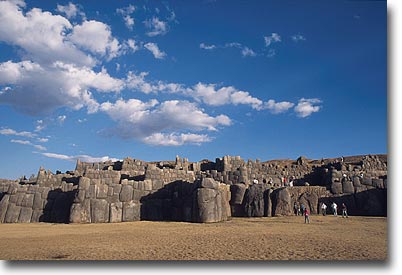 |

|
| Another interesting feature of the ruins is a large circular chambered structure that has finely carved channels for carrying water. I must apologize at this point for not being able to explain the purpose of it as quite honestly... I was more interested in taking pictures in the few remaining minutes of sunlight than listening to a guide theorize about what it was for. The difficult part was getting a shot without tourists wandering all over it. |
 |
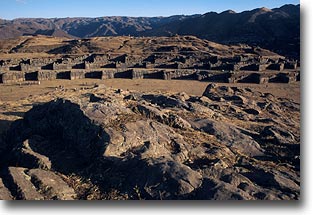
| If you can get up to Sacsayhuamán at the end of the day, you will be rewarded with some great light. And the late shadows really give texture and depth to the whole site. |
| I was really frustrated with all of my trips to the various ruins around Cusco as I never felt I had enough time to explore the sites let alone get the images I wanted. But I was fortunate to get some pictures with moon rises and some terrific weather as well. |
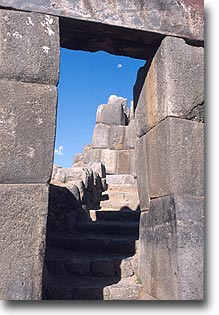 |
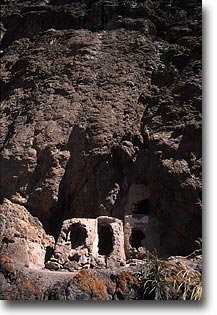 |
As you travel from Cusco out to the Sacred Valley you will often see small tombs that are built underneath small overhangs of rocky walls.
Most of these tombs will have holes in them as these three do, as huaqueros or grave robbers have already broken into them and taken whatever was there. |
| The Incas quite often built their cities and fortresses at ridiculously high and out of the way spots. One of the first stops on tours of the Sacred Valley is at the ruins at Pisac. Since these ruins are a bit remote, visitors must endure a short hike back to see the principle section of lower ruins. As you can see, these ruins were built with rough rounded stones and rocks. |
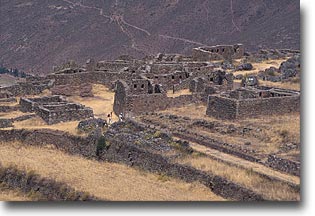 |
 |
Then one climbs up to the upper section of ruins which are mostly made of finely crafted and finished blocks that fit together perfectly without any sort of mortar, cement or filling material. |
| There is a certain debate as to the purpose of various section of the ruins. One does often find areas that appear to have had ceremonial importance as does this large rock that is still partially surrounded by a circular wall. Unfortunately, the conquistadors were more interested in finding gold than preserving ruins and quite often destroyed walls in their never-ending thirst for gold and treasure. |
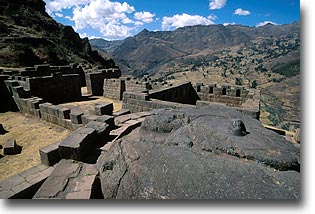 |
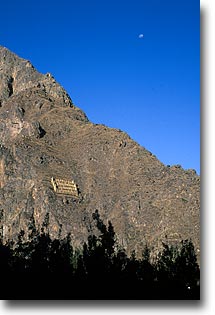 |
Our last stop (while there was still daylight) after hitting several touristy shopping spots and a really long lunch was the ruins at Ollantaytambo. Unfortunately by the time we got there, the main ruins were in the shade and one could pretty much forget about getting many shots of value. I did look across through the trees and saw a small structure on the side of a hill and the moon coming up fast behind it. I made a mad dash up the side of the hill trying to find a decent spot where I could get above the trees and get the moon in the frame... I took a few frames and started looking around to see what else I could shoot...
I climbed up a bit higher and saw that the shadows of the mountain ridge were beginning to move up the side of the hill and I was able to shoot a few more frames as it approached the ruins. |
|
Ollantaytambo is an interesting town and there are still people living in Incan structures and a few live in Incan 3 story homes nearby... Unfortunately I found this all out after there was any possibility of seeing it.
My recommendation for people visiting the Sacred Valley who want to get good images, is hire a car and driver, skip the shopping stops and don't try to see it all in one day. |
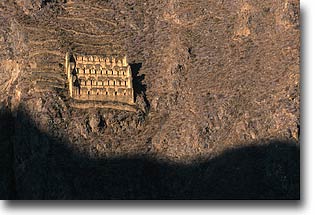 |